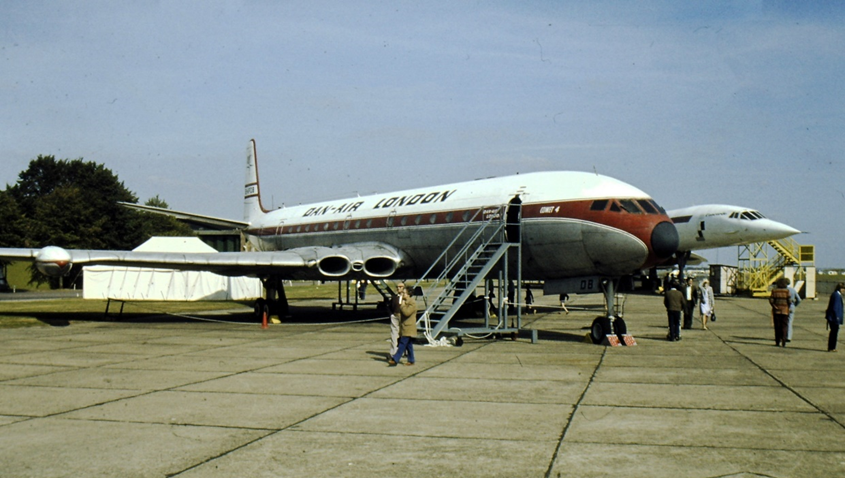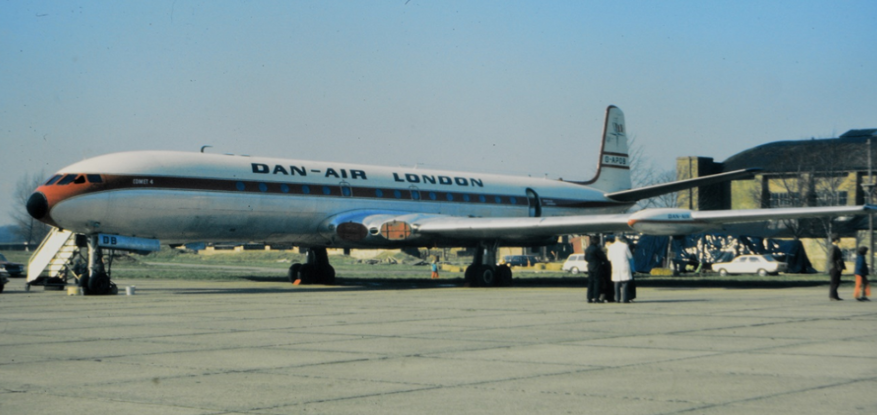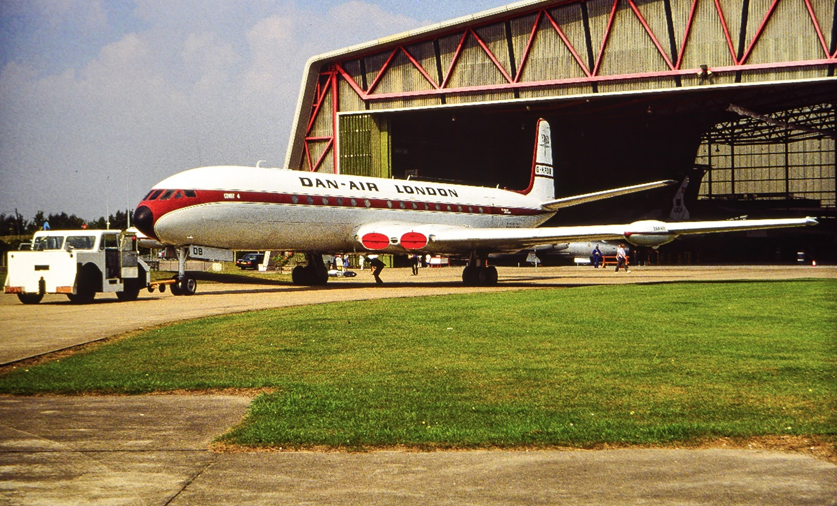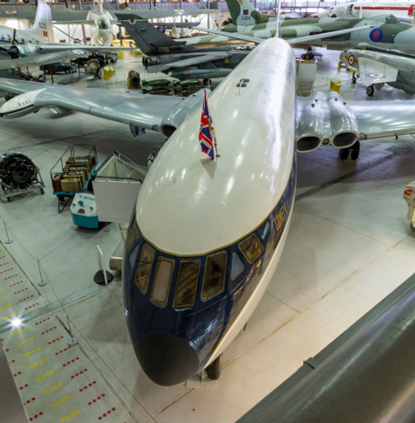


On 12 February 1974 de Havilland Comet G-APDB took off for the last time. Leaving the Dan-Air engineering base at Lasham in Hampshire she transited north towards her birthplace in Hatfield. On arrival she descended to complete a low pass along the runway from which she had made her first flight 15 years earlier, pulling up at the end of the pass as the flight crew settled on the heading for the short flight to their final destination at Duxford. When the wheels touched down in Cambridgeshire PDB had completed 36,269 flying hours. More hours than any other Comet.

How had this final journey come about? G-APDB was a Comet 4 and was the second built from an order placed by BOAC in 1955 for 19 aircraft. Her first flight was on 27 July 1958 before being delivered to BOAC at London Airport on 12 September 1958. After being with the airline for just a couple of weeks or so in early October she positioned across the Atlantic to New York Idlewild airport. Aviation history would be made 4 October 1958 when PDB left New York bound for London on a scheduled BOAC flight, making her the first Jet aircraft to cross the ocean from West to East on a scheduled flight. Coming in the opposite direction and making the first East-West scheduled crossing was sister ship G-APDC. PDB’s direct flight also set a record at the time for the fastest crossing with a time of 6 hours 12 minutes. Later that year more fame came PDB’s way when she was selected to be the aircraft to convey Prince Philip Duke of Edinburgh on his Royal tour around Canada.

She stayed with BOAC until 1965 when as part of the run-down of the Comet fleet BOAC sold her to Malaysian Singapore Airlines (MSA) as 9M-AOB where she often operated flights back home to Europe. MSA had bought five ex-BOAC aircraft including the other aircraft to fly first across the Atlantic, PDC. MSA also temporarily leased two others. The five owned aircraft were sold in 1969 to Dan-Air who flew them back to Lasham. G-APDB was one of those chosen to return to service after Dan-Air had fitted her with 106 seats.

Based mainly at Gatwick she was used until 12 November 1973 for holiday flights to the sun. Her last commercial flight with Dan-Air was on that November day from Alicante to Teeside after which she returned to Lasham for storage. The Dan-Air board decided to offer this historic aeroplane up for preservation and donated her to the East Anglian Aviation Society who were based at Bassingbourn near Royston, however her final resting place would be just down the road at Duxford where she arrived on 12 February 1974, fifty years ago.

After a year with the EAAS the group was torn between two different roads that members wanted the Society to travel, so it was decided to set up a new group for the Duxford team who became known in 1975 as the Duxford Aviation Society and inherited their first aeroplane the Comet. With no hangar space available she remined outside in her Dan-Air livery until 2006 when the IWM who had moved onto the airfield built a new super hangar and offered DAS space for the Comet and a few other aircraft. It was at that time that the DAS board took the decision to have PDB professionally repainted back into her 1958 BOAC scheme she wore when making that first-ever scheduled jet crossing of the Atlantic. Today she is regularly opened to the public to see what jet travel looked like back in those halcyon days.
Plans are afoot to refurbish the interior to convey the different levels of comfort that PDB offered during her service life, from the First Class luxury of BOAC to the trips to the Sun economy of Dan Air.


Happy anniversary PDB, DAS’s first!
Keith Bradshaw
Registered Charity No. 285809